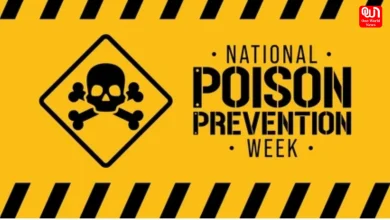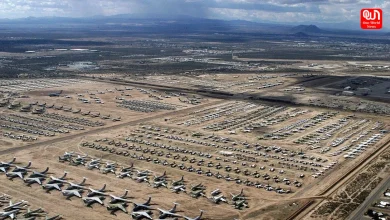Kaam Ki Baat: What real estate and health sector is expecting in Budget 2021

Union Finance Minister had said that this year’s budget would be historic and like “never before”
Union finance minister Nirmala Sitharaman is likely to announce the budget for the year 2021-22 on February 1. This would be the first paperless budget for which the traditional annual Halwa ceremony was held on Saturday. The FM had said last month that the 2021 budget would be historic and like “never before.” A budget that would pitch India into becoming the new engine of global growth.
What real estate is looking at?
The real estate sector is hoping for announcements that could change the future of real estate in the country. Even though several announcements were made in the last 6 months, such as major funding for the Pradhan Mantri Awas Yojana (PMJAY), revision of the differential between the circle rate and agreement value which have boosted the sentiments of real estate investors and buyers.
Like every year, home buyers are looking for more cash to make property investment easier and probable. In the budget 2020, the taxation regime was simplified. This year, people are expecting more liquidity, especially for the taxpayer so that they can spend money and help in boosting the economy.
Developers are seeking a GST cut for a limited period of time amid the dwindling demand which has put under-construction properties and new the project launches on a standstill following the Coronavirus pandemic. Developers feel that this could help them to make the inventory more attractive to the home buyers and speed up construction.
Since the demonetization, liquidity has remained a concern for developers. With coronavirus further worsening the situation, developers are hoping that the Finance Minister will announce measures to ease borrowing for them.
Developers need to have enough margins and incentives to prevent the Housing for All scheme from derailing. While the PMAY (Pradhan Mantri Awas Yojana) mission has received fresh funds from the government last November, private developers are still struggling to deliver projects on time.
Toshiba Gautam, an architect and an expert of the subject said “Given that the real estate sector is the second-largest employer in India and directly or indirectly it accounts for around 10 per cent of the GDP, it deserves serious attention in the upcoming budget. Commercial real-estate has been a watch-out sector for both Indian and overseas owing to its resilience and strong fundamentals. The government should therefore look to further encourage more NRI investments in India. For example – the government can do a reduction in income earned from long-term capital gains.”
Read more: Where India stands in renewable power generation in 2020?

Health Sector
Nirmala Sitharaman has said last month that investment in health is going to be important and would take top priority, as the government is looking into increasing health infrastructure as well as human resources for health towards achieving a depletion in out of pocket health-related expenses and making lives safer.
Health expenditure would be a central aspect of the 2021 budget after the end of a traumatic year, largely caused by the coronavirus. While coronavirus-related interventions, such as the distribution of COVID-19 vaccine and access to coronavirus treatment remain relevant, it would be interesting to see if the Centre uses this opportunity to correct some basic structural problems that the health sector has been facing for many years.
Ailing condition of the health sector in India
The general neglect of health in budgetary allocations is one of the primary problems. There is consensus that public spending on health in India is vastly inadequate (as per the population) by all measures. The National Health Policy of 2017 aims to escalate public health expenditure in India to 2.5 per cent of GDP by the year2025. The current such expenditure in India, combining the state and central governments, is only about 1.25 per cent of the total GDP – amongst the lowest across the world. The low priority given to health expenditure can be estimated by the fact its share in total expenditure by the government is a mere 4 per cent, while the world average is around 11 per cent. As per the Oxfam’s ‘Commitment to Reducing Inequality’ report, India was placed on 155th position – fourth from the bottom – in health spending.
This poor spending on health is reflected in inadequate infrastructure and resources, and overall limited access to health services and insufficient human resources. As per the budget brief of the Accountability Initiative, 50,069 health and wellness centres were functional, accounting for just 65 per cent of the cumulative target for the financial year 2020-21. Further, according to 2019 Rural Health Statistics, less than 10 per cent of primary healthcare centres are funded as per Indian Public Health Standards norms, with 25 per cent of the medical officer positions being unoccupied.
As a result, a large section of society is depended on private-sector healthcare services which are often expensive and are spend out of pocket (Health insurance is still not a big thing in India). The out-of-pocket expenditure of Indians is over 60 per cent of all expenditure on health in India. 60 per cent is highest in the world, whereas the World Health Organization suggested norm is 15 per cent to 20 per cent.
So, even before the pandemic emerged to create a global health crisis, our country’s health sector was already in crisis needing urgent interventions backed by resources. Sadly, government’s response has been to increase privatisation, with PPPs (Public-Private partnerships) being proposed to run medical colleges and district hospitals, and insurance-based schemes that include private health providers through the PMJAY scheme (Pradhan Mantri Jan Arogya Yojana), also known as Ayushman Bharat Yojana. Expanding public health facilities through higher government spending would have been a better idea.
Another area which demands immediate attention is better remuneration for frontline workers. ASHA workers were at the forefront of the pandemic at the community level, risking their own safety and contributing to building and track awareness. They are also playing an important role in the distribution of the COVID-19 vaccine. It has been pointed out time and again that these ASHA workers are heavily underpaid. There has been a demand for regular payments for them instead of an incentive-based system that they are currently part of. Given their role in the pandemic, it will be fitting to introduce a considerable fixed pay for them in this year’s budget.
Have a news story, an interesting write-up or simply a suggestion? Write to us at info@oneworldnews.com







